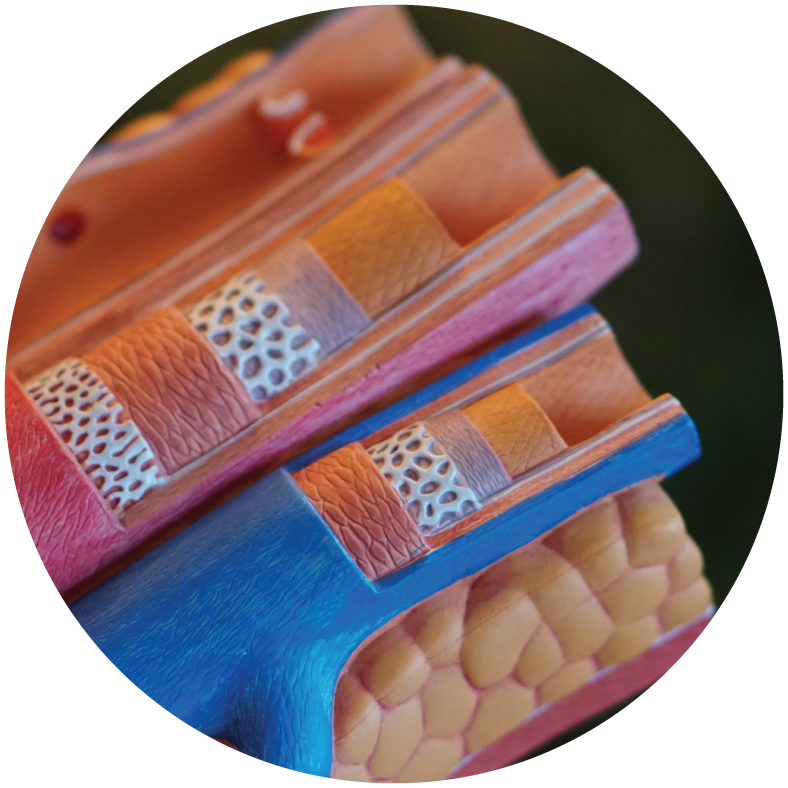Close


What is cholesterol?
Cholesterol is a fatty substance (a lipid) necessary for the life of our cells. It is one of the major components of our cell membranes and is essential for the production of many hormones. But beware, cholesterol can quickly become dangerous if it accumulates in the walls of our arteries.
What about “good” cholesterol?
Like everyone else, you have heard of “good” and “bad” cholesterol. This distinction is a misnomer. There is only one type of cholesterol, which is neither good nor bad. In reality, in the blood, cholesterol hardly exists in free form: it is coupled to transport proteins called apoproteins. The coupling of an apoprotein and a lipid results in a lipoprotein, which makes the lipid soluble in the blood. Two lipoproteins are of particular importance with regard to cholesterol: low density lipoproteins (LDL) and high density lipoproteins (HDL).
When we talk about cholesterol, several things must be differentiated:
During a lipid check-up, total cholesterol and HDL-cholesterol are measured, which makes it possible to calculate LDL-cholesterol (by subtraction). It is interesting to calculate the LDL-cholesterol because it is a causal factor in atherosclerosis (i.e. it will accumulate in the artery walls). HDL-cholesterol, on the other hand, is a protective factor.
Where does it come from?
The cholesterol in our blood comes from :
How much cholesterol do I need to be healthy?
There is no specific cholesterol level that places an individual at risk. It is the totality of lipid abnormalities and other risk factors (hypertension, smoking, diabetes, obesity,) that must be taken into account to assess the patient’s overall cardiovascular risk and to treat them in the most effective way.
Doctors now have tools for estimating this overall risk, which are very effective and make it possible to propose the most appropriate therapeutic approach.
In people who have already had an accident (secondary prevention), LDL-c is controlled according to precise and strict standards and very often involves changes in diet and medication.
In subjects who have never had an accident (primary prevention), there are no such strict standards and it is the calculation of the overall risk that is important to decide on the value of lowering cholesterol. Overall, it is accepted that in adults we should have :
But the important point is that it is the combination of “cholesterol abnormality + abnormalities of other risk factors (hypertension, obesity, sedentary lifestyle, smoking, diabetes)” that will allow the overall cardiovascular risk to be assessed. Indeed, in primary prevention, a blood cholesterol level is just a figure. In order to know if this cholesterol level represents a risk for you and to identify the level that would be most beneficial to you, it is necessary to take into account all the modifiable and non-modifiable risk factors, since age and sex are taken into account in the calculation of the overall risk.
In the Belgian population aged 35 to 84 (about 5,500,000 individuals) there are about 1,700,000 individuals whose risk of having a major cardio or cerebrovascular accident within 10 years exceeds 15%. This risk exceeds 30% for 350,000 of them.
How can I lower my cholesterol level?
As our diet is generally too fatty, in all cases, a return to a healthier diet in terms of lipids is necessary.
You should eat less fat overall and especially avoid fats of animal origin (meat, full-fat dairy products, cheese) and fats that are solid at room temperature (butter, certain margarines). These so-called saturated fats increase cholesterol levels.
On the other hand, vegetable oils and soft margarines are recommended (but not in excess, since the aim is to restrict the overall consumption of fats), as they lower cholesterol levels.
Regular physical activity (30 minutes a day if possible) and not smoking are also two tips to keep your arteries healthy.